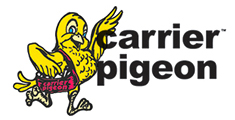Photographing Our Furry Friends
Almost everyone loves a good dog photo.
My wife and I think our dog Rudy is the cutest thing in the world. Rudy is a mixture of Bichon and Shih-Tzu. What they call a “Teddy Bear” dog. We have tons of great pictures of her yet we still find ourselves looking at photos of other dogs we find on the internet. They make us smile and it never seems to get old. I thought this month it might be useful to share some tips on photographing dogs. If I had to guess, they’re probably one of the first and most frequent things we take a picture of when we get into photography. I happen to be partial to dogs but most of these tips can apply to cats as well. I’m a sucker for great cat photo, too.
One of the easiest ways to improve your dog photos is to consider the angle of your camera in relation to your dog. Most dogs are significantly smaller than us. If you take the picture standing up (pointing down), you’re shooting almost a birds eye perspective of them. You’ll mainly get the top of their head. Most portraits of people are taken at eye level. Consider photographing your dog the same way. If you sit or lay down on the floor, the camera will make better eye contact with them. Your dog’s personality will come across a lot stronger and the photo will be more engaging. If you’re photographing indoors try doing this near a natural light source for best results. Sun porches are fantastic or try to capture them hanging out around the light from your back or front door. Make sure to try a few shots in black and white as well. Most dog breeds tend to look amazing in black and white. I find that with certain breeds the beautiful textures in their fur is accentuated when shooting this way. Get creative, try shooting them from behind looking out a window. You’ll get a wonderful silhouette effect.
The lens you choose can have great effect on your dog photos. When using a long telephoto lens you can photograph your dog from further away. By doing this you’ll be able to capture them in their natural state. I find that my dog changes positions once I stick a camera in her face. This long lens approach dramatically improves my results. She doesn’t even know I’m around. A fun option is to use a wide angle lens and get in real close. This will exaggerate their facial features (like their nose or big eyes) and often make them look even more adorable. It’s kind of like a fish-eye effect. I typically have to work quickly when trying this. If you want a classic portrait with a flat or blurred back-round, try using a focal length of about 85mm. This should be perfect for just about any size dog. Experiment with your aperture to get the back-round effect to your liking. By setting it lower your back-round blur will increase.
If you own an active catching-frisbees-in-mid-air type of dog then you’ll probably want to document their incredible abilities. Put your camera in shutter priority and select a shutter speed fast enough to freeze the action. Your camera will do the rest of the work automatically for the correct exposure. Set it to at least a shutter speed of 1/250th. If not faster. You’ll be doing this outdoors, so light shouldn’t be an issue. Also, make sure you’re shooting in the cameras burst mode with continues auto-focus. The camera will take multiple pictures in a split second and continue to focus while you hold the shutter down. This will further ensure that you capture the perfect moment.
One of the best things about dogs is the spontaneity. The Kodak moments will always come unexpectedly. For this reason you should keep a camera laying around that’s ready to go at a moment’s notice. It makes me cringe to say it, but even your phone will do. Any camera is a good camera when something amazing happens. Simply store the camera in fully automatic. You probably won’t have time to fidget with settings when the cutest thing you’ve ever seen suddenly unfolds. Any picture is better than no picture.
The best advice for photographing dogs is simply patience. If you have a lay-round-the-house-all-day type of dog, this might not apply to you. I’m often jealous of people that do. It’s so much easier. If your dog is highly excitable and responds to everything like mine. Patience is key. If I want a proper portrait near some nice window light, I have to allow myself at least thirty minutes to achieve this. I sit near the window with her and let her look out and bark. I don’t intervene at all. I used to and it only makes it worst. Eventually she calms down, peacefully gazes out the window, and soaks up the sun. This is when I take my portrait. The special moments can’t be forced since they occur spontaneously, so these photos are an exercise in patience as well. Like I said, all you can do is be prepared. Good moments will eventually occur. More often than you’d think. When they finally sit calmly for that perfect portrait, catch that frisbee, or do the cutest thing you’ve ever seen; make sure you give them a big hug and a treat. Give them one from me as well.
Kenneth Taylor





